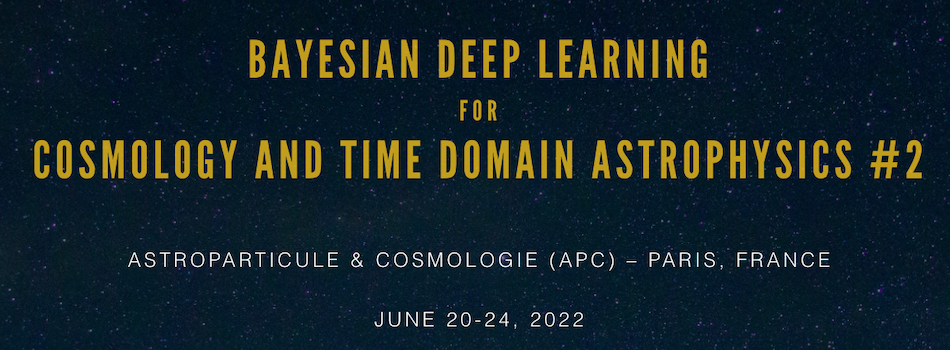Description
PhD or postdocs present quickly their work
We report the automatic detection of 11 transients (7 possible supernovae and 4 active galactic nuclei candidates) within the Zwicky Transient Facility fourth data release (ZTF DR4), all of them observed in 2018 and absent from public catalogs. Among these, three were not part of the ZTF alert stream. Our transient mining strategy employs 41 physically motivated features extracted from both...
The aim of this work is to provide a data-driven approach to estimate a background model for the Gamma-Ray Burst Monitor (GBM) of Fermi satellite. We employ a Neural Network (NN) to estimate each detector background signal given the information of the satellite: position, velocity, direction of the detectors, etc.
The estimated background can be employed into a triggering algorithm to...
When merging, two black holes spiral each other before coalescing into a bigger compact object, distorting the fabric of space-time and emitting gravitational waves. These can be detected and analyzed. Most of the analysis techniques rely on computationally-expensive Bayesian inference software. Recently, machine-learning-based techniques have emerged. These have the advantage that the...
Cosmic shear estimation is an essential scientific goal for large galaxy surveys. It refers to the coherent distortion of distant galaxy images due to weak gravitational lensing along the line of sight. It can be used as a tracer of the matter distribution in the Universe. The unbiased estimation of the local value of the cosmic shear can be obtained via Bayesian analysis which relies on...
The Laser Interferometer Space Antenna (LISA) is an ESA mission for a future space-based Gravitational Wave detector. Work is currently underway on establishing a ground segment data processing and data analysis pipelines, from the raw instrumental data to astrophysical catalogs. A central part of this are the LISA Data Challenges (LDCs), which consist of simulated LISA data to be analyzed by...
With large heaps of time-domain active galactic nuclei (AGN) data in multiple broadband wavelengths anticipated from upcoming surveys such as the Vera C. Rubin Observatory’s Legacy Survey of Space and Time, statistical models must be equipped to process this irregularly sampled light curve data at scale and better represent the optical and UV variability of the compact region near the central...
The INPOP planetary ephemerides are worldwide references for Planetary Ephemerides for almost twenty years now, and the subject proposed in this poster is devoted to continue this development in investigating a rigorous mathematical set-up of a Bayesian approach for the determination of INPOP parameters involved in the ephemerides computation.
It has been already shown in several publications...
Here we present the results of our tests involving different Deep Learning (DL) algorithms in order to detect Gravitational waves (GW) in time-domain data from Massive Black Hole Binaries (MBHB) mergers. We selected three different neural networks (Shallow Multilayer Perceptron, Deep Multilayer Perceptron and a Deep Convolutional Neural Network) which are trained with simulated GW signals and...
We propose an improvement of the statistical model of the Delight code, which proposes a Bayesian estimation of the photometric redshift PhotoZ of target galaxies from training galaxies data.
The peculiarity of this estimator is that it combines a template fitting estimator capable of extrapolation to large redshift with a more accurate machine learning estimator but with a low extrapolation...
The idea of using Gravitational Wave (GW) detections to learn about the characteristics of our universe was first proposed by Schutz (1984), where they proposed GW signals from compact binary coalescences (CBCs) can be used to infer cosmological parameters of the universe. This is because GW signals give us information about the calibrated luminosity distance of the event without the use of...
Gaussian phase noise of radio intensity time series is reduced by a factor of n when the raw voltage data are digitally filtered through n orthornormal bandpass eigen-filters, sharing the same intensity bandwidth, and the resulting intensity series are co-added. (Lieu et al. 2020) The algorithm is designed to enhance the sensitivity of detecting ultra-fast radio bursts that would otherwise be...
We present a Convolutional Neural Network (CNN) model for the separation of astrophysical transients from image artifacts, a task known as "real-bogus" classification, that does not rely on Difference Image Analysis (DIA) which is a computationally expensive process involving image matching on small spatial scales in large volumes of data. We explore the use of CNNs to (1) automate the...

